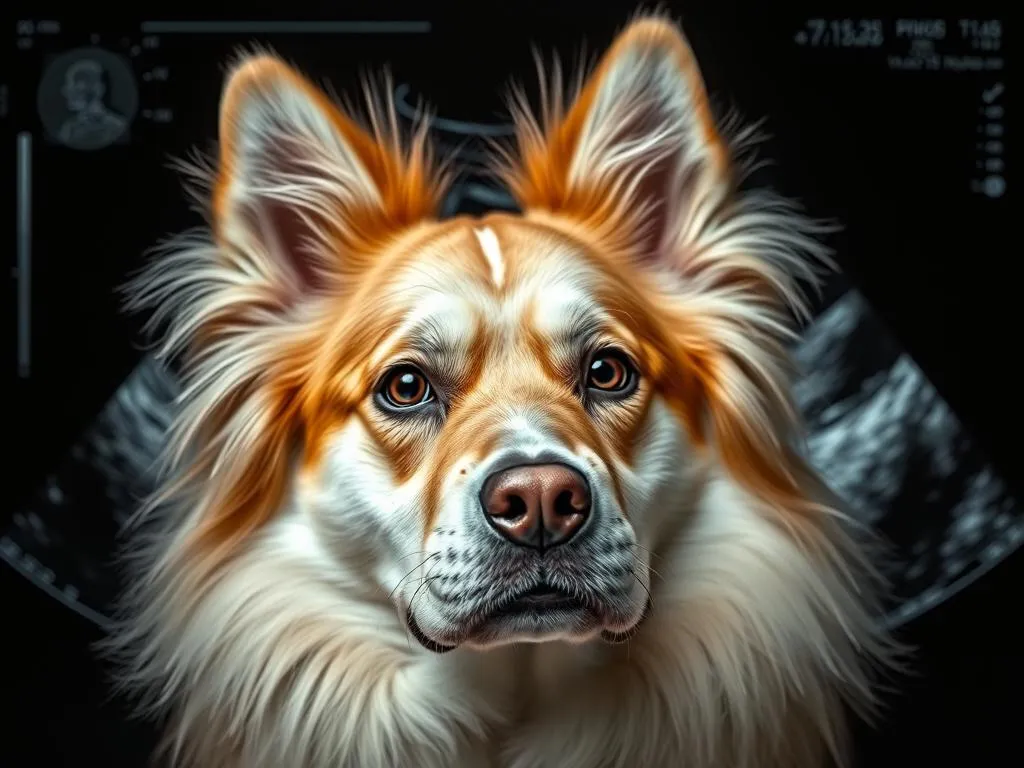
Introduction
Ensuring the health and well-being of our canine companions is paramount for responsible pet ownership. Regular health care plays a critical role in maintaining a dog’s quality of life, helping to identify potential health issues before they escalate. Among the various diagnostic tools available in veterinary medicine, dog ultrasounds offer a unique, non-invasive way to gain insights into your pet’s internal health.
This article aims to explore the costs associated with dog ultrasounds and the significant benefits they provide. By understanding both the financial and health implications, pet owners can make informed decisions regarding their dogs’ health care.
Understanding Dog Health Care
Importance of Regular Veterinary Check-ups
Preventive care is essential for dogs, as it helps catch health issues early—before they become serious. Regular veterinary check-ups allow for monitoring common health problems such as obesity, dental disease, and skin conditions. These routine visits can also include vaccinations and parasite control, ensuring that your dog remains healthy and happy.
Role of Diagnostic Imaging in Veterinary Medicine
Veterinary medicine has evolved significantly, with diagnostic imaging becoming an integral part of pet health care. Among the various imaging tools, such as X-rays and MRIs, ultrasounds stand out for their ability to provide real-time images of a dog’s internal organs without the need for invasive procedures. This non-invasive technique allows veterinarians to assess conditions affecting the abdomen, heart, and other internal structures with ease.
What is a Dog Ultrasound?
Definition and Purpose
A dog ultrasound is a diagnostic imaging procedure that uses sound waves to create images of a dog’s internal organs. This technology is particularly effective for visualizing soft tissues, which may not be as clearly represented in X-rays. Common reasons for recommending an ultrasound include unexplained abdominal pain, pregnancy monitoring, and evaluation of internal masses or organ health.
How Ultrasounds are Performed
The process of conducting a dog ultrasound typically involves the following steps:
- Preparation: You may be asked to withhold food from your dog for several hours before the procedure to ensure a clear view of the abdominal organs.
- Positioning: Your dog will be placed on an examination table, and a gel will be applied to the skin to help transmit sound waves.
- Imaging: The veterinarian will use a handheld device called a transducer to send and receive sound waves, producing images of the internal structures.
- Analysis: The images will be analyzed in real-time, and your veterinarian will discuss any findings with you.
Benefits of Dog Ultrasounds
Non-Invasive Diagnostic Tool
One of the most significant advantages of dog ultrasounds is their non-invasive nature. Unlike surgical procedures, ultrasounds do not require incisions, meaning there is less risk and discomfort for your pet. This approach allows for a safer examination, particularly for older dogs or those with pre-existing health conditions.
Accurate Diagnosis of Internal Conditions
Ultrasounds are instrumental in diagnosing a variety of internal conditions, such as tumors, organ enlargement, or fluid accumulation. By providing a detailed view, veterinarians can make more accurate diagnoses, which is crucial for determining the appropriate treatment plan. Early detection of issues can significantly improve the prognosis for many conditions.
Monitoring Health Over Time
Ultrasounds can also be used for ongoing health monitoring, especially for dogs with chronic conditions. For instance, a dog diagnosed with liver disease may require regular ultrasounds to track changes in the liver’s size or appearance. This proactive approach can lead to timely interventions that enhance the dog’s quality of life.
How Much Do Dog Ultrasounds Cost?
Average Cost Range
When considering a dog ultrasound, pet owners often wonder, how much do dog ultrasounds cost? The average costs for dog ultrasounds typically range between $300 and $500. However, prices can vary based on several factors, including the location of the veterinary clinic and the complexity of the ultrasound required.
Additional Costs to Consider
In addition to the ultrasound itself, there may be additional costs, such as:
- Follow-up visits: If further tests or a second ultrasound is necessary, these services can add to the overall cost.
- Sedation: In some cases, dogs may need to be sedated for the procedure, which can incur additional charges for the sedation and monitoring.
Insurance and Payment Options
Pet insurance plans may cover a portion of the costs associated with dog ultrasounds, depending on the policy. It’s essential to check with your insurance provider for specific coverage details. Additionally, many veterinary clinics offer payment plans or financing options to help manage costs, making necessary diagnostics more accessible for pet owners.
Factors Influencing Ultrasound Costs
Geographic Location
The cost of dog ultrasounds can vary significantly depending on geographic location. Urban areas often have higher veterinary fees due to increased operational costs, while rural clinics may offer more competitive pricing.
Veterinary Clinic Reputation and Experience
The reputation and experience of the veterinary clinic can also influence costs. Established clinics with a strong track record may charge more for their services, reflecting their expertise and use of advanced technology.
Type of Ultrasound Required
Different types of ultrasounds may come with varying price tags. For example, abdominal ultrasounds, which are commonly used to assess organ health, may cost less than specialized cardiac ultrasounds that require additional training and expertise.
Preparing for a Dog Ultrasound
Pre-Ultrasound Instructions
Before the ultrasound, your veterinarian will provide specific instructions to prepare your dog. Common guidelines include fasting for several hours prior to the procedure to ensure clear images. This might involve withholding food and water, depending on your dog’s condition and the veterinarian’s recommendation.
What to Expect on the Day of the Ultrasound
On the day of the ultrasound, you can expect the appointment to last anywhere from 30 minutes to an hour. It’s essential to arrive on time and follow any pre-appointment instructions given by your veterinarian. Your dog will be examined and positioned comfortably on the examination table for the procedure.
Post-Ultrasound Care
After the ultrasound, there are generally no specific restrictions for your dog. However, it’s always a good idea to monitor them for any unusual behavior or signs of discomfort. If sedation was used, ensure your dog is given time to recover fully before engaging in regular activities.
Conclusion
Understanding the significance of dog ultrasounds is crucial for promoting your pet’s health and well-being. These non-invasive procedures provide valuable insights into internal health conditions, enabling early detection and effective monitoring. While costs can vary, the benefits of peace of mind and proactive health care often outweigh the financial considerations.
Regular consultations with your veterinarian can help determine the necessity and timing of dog ultrasounds as part of your dog’s overall health care strategy. By weighing the costs and benefits, you can ensure that your furry companion receives the best possible care.
Frequently Asked Questions (FAQs)
Are ultrasounds safe for dogs?
Yes, dog ultrasounds are considered safe and non-invasive, with minimal risks involved.
How often should my dog have an ultrasound?
The frequency of ultrasounds depends on your dog’s individual health needs, as determined by your veterinarian.
Can I be present during the ultrasound?
Most veterinary clinics allow pet owners to be present during the ultrasound, providing comfort to both the dog and the owner.
What other diagnostic tests might be needed alongside an ultrasound?
Depending on your dog’s condition, additional tests such as blood work, X-rays, or biopsies may be recommended alongside an ultrasound.
References
- List of credible sources and studies on dog health care and ultrasound technology.
In this comprehensive guide, we have explored the costs and benefits of dog ultrasounds, emphasizing their importance in maintaining optimal health for our pets. Understanding these aspects can help pet owners make informed decisions about their furry friends’ health care.









